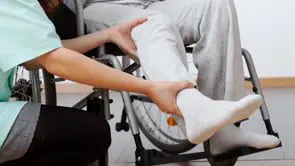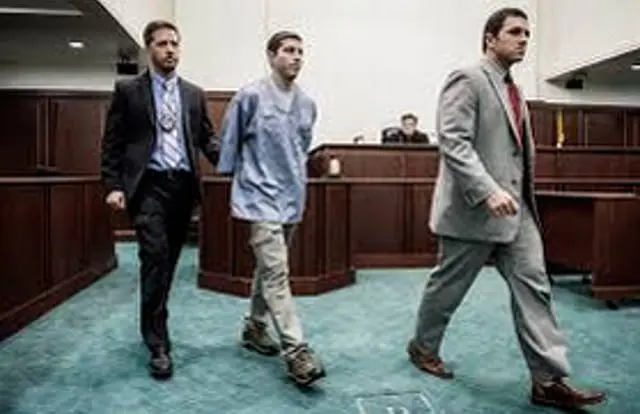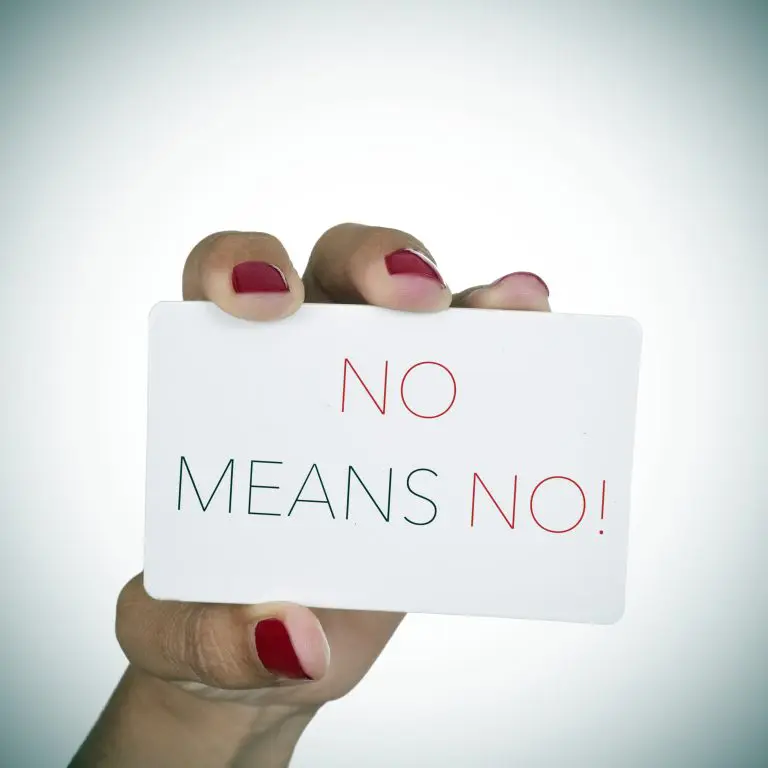Unemployment And The Crime Rate
By Kate Daniels – former Contributing Author to Crime, Justice and America magazine. Originally published in 2004 and reposted with permission from Crime, Justice and America magazine
“Are there no prisons?” asked Scrooge. “Plenty of prisons,” said the gentleman, laying down the pen again. “And the Union workhouses,” demanded Scrooge. “Are they still in operation?” —From A Christmas Carol, by Charles Dickens
In Dickens’s England, poverty alone could get you sent to prison. If you were poor, it meant you were lazy, idle, and probably addicted to vice. This was the origin of the workhouses Scrooge recommended: institutions where those poor who weren’t imprisoned for debt were put to work at the lowest possible wage. (By the way, “union” doesn’t refer to labor unions, still unknown at that time. Scrooge meant the united church parishes that ran the workhouses.)
We’ve come a long way since Marley’s ghost paid Scrooge a holiday visit. Debtors’ prisons are gone, and despite recent laws mandating work for welfare recipients, the workhouse never existed on this side of the Atlantic. But a connection between crime and employment, or the lack of it, still exists.

-
Attorneys.Media
-
@attorneys_media
-
linkedin
-
Digg
-
Newsvine
-
StumbleUpon
It seems so obvious: lack of a job equals more crime. After the boom of the late nineties, ending in 2000 with the lowest unemployment rate in decades (4.0%), layoffs and business closures have forced the rate back up; it now hovers around 6%. And according to the FBI, the crime rate has also increased, up 2.1% overall in 2001 over the preceding year.
Even experts say the connection is “intuitive”; that word keeps turning up in studies on the subject. But those same experts disagree about how solid the link is. Dr. Neil R. Vance, Senior Lecturer at the School of Public Administration and Policy, at the University of Arizona, says, “While it sounds commonsense that being unemployed automatically leads to criminal behavior, the available empirical evidence does not support this supposition… there is little research to support a causal relationship.” And indeed, a national survey (Ted Chiricos, Social Problems, 34:187-122) supports this. But when Chiricos examined studies conducted at the state and local level that considered property crimes apart from violent crimes, he found a 75% correlation between joblessness and law-breaking.
It’s a hard connection to prove, no matter how obvious it may sound, in part because it’s not as easy as one might think to define what’s meant by unemployment. The latest Federal unemployment rate gives an indication, but one that leaves out too many variables, and too many individuals. And the rate isn’t an exact measure. Nationally it’s computed based on the Current Population Survey (CPS), a monthly survey of 60,000 people. Statistics for smaller regions, such as states and most cities, are figured differently, using several different methods. Let’s stick with the simplest, the national figures based on the CPS.


-
Attorneys.Media
-
@attorneys_media
-
linkedin
-
Digg
-
Newsvine
-
StumbleUpon
According to the US Department of Labor, an “employed person” is anyone who did any work as a paid employee, work in their own business or profession or farm, or fifteen unpaid hours in a family business, during the reference week. (The week of each month that includes the twelfth.) “Temporarily absent” workers, such as those out on vacation or sick leave, also count as employed. But that’s a very wide definition; it includes both those working a forty-hour week and those working for one hour during that reference week. There’s no distinction between part-time, full-time, underemployed… all are considered employed.
At the same time, only those people without jobs who have made an effort to find work during the four-week period ending with the reference week are counted as unemployed. If you haven’t been looking, you’re no longer counted as a part of the labor force, and any study that just looks at the unemployment rate will miss you. If you don’t look because you think there are no jobs available, you are officially a “discouraged” worker.
There are many reasons an individual over sixteen years old (the base line for all employment statistics) might not be included in the “civilian labor force”, which is the total of those officially employed and those officially unemployed. First there’s that word “civilian”; members of the armed forces aren’t counted. Nor are those in institutions, whether the institution in question is a retirement home or a prison. The retired elderly, the disabled of any age, and young people enrolled in school (another institution) aren’t included either.
Naturally the percentage of people in the labor force fluctuates with the unemployment rate. For example, in 1982, when the unemployment rate was 9.7%, only 64% of those over sixteen were in the labor force. When the unemployment rate fell to 4.0% in 2000, labor force participation rose to 67.2%; in 2001, with an unemployment at 4.8%, participation fell again to 66.9%. Some of this fluctuation is due to people taking early retirement, but part of it is due to a growth in the number of discouraged workers. That number rises when the unemployment rate goes up: from 3.7% of those not in the labor force in 2000, to 4.5% in 2001.


-
Attorneys.Media
-
@attorneys_media
-
linkedin
-
Digg
-
Newsvine
-
StumbleUpon
What has all this to do with crime? Historically, high-crime areas have often also been areas of high unemployment and low participation in the labor force. As an example, according to the 1990 census, 14.9% of all California residents were living in poverty. In Los Angeles, that number was 18.9%, while in wealthy Marin County, only 6.6% of the population were poor. 65.8% of those over sixteen were in the labor force in Los Angeles, compared with 73.3 % in Marin County. And sure enough, Marin County supplied the state correctional system with about 3% of its inmates, while LA accounted for almost a full third of the state’s prisoners. Even allowing for a substantial difference in population, the rate of incarceration was higher in Los Angeles, along with the unemployment and poverty rates.
Other correlations between the jobless and the prison population can be found. Education, for instance: in November of 2002, only 43.9% of those with less than a high school education were in the workforce, and 9.1% of them were unemployed. Compare this with statistics for college graduates, 78.6% of whom were in the workforce, with an unemployment rate of only 4.5%. Statistics on the education level of prisoners are harder to find (an odd omission), but a decade-old nationwide survey of state prison inmates shows that 65% of them had less than a high school education, while only 12% had any college. Minority status is another indicator; a higher percentage of minorities can be found on the unemployment rolls, and it is notorious that they are disproportionately represented in the prison population.
Yet the causal linkage between unemployment and the crime rate remains elusive. Consider again the definition of employed; you can be considered employed with as little as one hour a week of work. In addition to those not counted in the labor force and thus not included in the unemployment rate, many work in part-time and/or low earnings jobs. In 2000, the US Department of Labor defined “low earnings” as $253.45 or less per week.
At this point, a life of crime can in effect raise a person’s salary. Despite the adage, crime sometimes pays very well. Richard B. Freeman evaluated urban crime in the late 1980’s this way: “Given the well-documented growth of earnings inequality and fall in the job opportunities for less-skilled young men in this period, and the increased criminal opportunities due to the growth of demand for drugs, the economist finds appealing the notion that the increased propensity for crime is a rational response to increased job market incentives to commit crime.” (“The Labor Market”, from Crime, 1995, Wilson and Petersilia, editors, pp. 177-178) Incentive indeed; at that time, an uneducated young man in Washington D.C. could expect to make thirty dollars an hour dealing drugs.


-
Attorneys.Media
-
@attorneys_media
-
linkedin
-
Digg
-
Newsvine
-
StumbleUpon
Of course, a major “business expense” faced by these illicit entrepreneurs is the possibility of doing hard time for their crimes. And admission to the prison system often comes with a ticket to the merry-goround of recidivism and a new connection between joblessness and crime.
Crime itself can lead to more crime. The term for this in criminological theory is “labeling.” Those who commit crimes are called “criminals”; no surprise there. But once that label is attached, it’s hard to remove. Society expects criminals to break laws, and it also expects those who have broken the law once to break it again, and again. Very often criminals will expect the same thing. And a depressingly large number of former prisoners live down to these expectations.
In California alone, 56% of all parolees are back behind bars within two years. During the month of June, 2002, 40.3% of all inmates in California state prisons were either parole violators or parolees convicted of new crimes. And over a quarter of the prison population had multiple convictions: 22.1% in for a second strike, and 4.6% were in for their third offence.
Maria Franco is a supervisor and parole officer with the California Department of Corrections. Daily she confronts the cycle of prison-paroleprison, trying to find jobs for former inmates. The current economic slowdown and the impact it’s had on California have made her job more difficult. As she says, every job opening has ten people applying, most of whom aren’t felons.
But even when unemployment is low, Ms. Franco has trouble finding work for her people. Many of them, of course, are untrained and uneducated. Remember, in 1991 65% of all state prison inmates nationwide lacked a high school diploma, and unemployment rates go up as completed grade levels go down. But parolees face an even bigger problem. According to California state law, the Department of Corrections is required to notify employers when they hire a parolee. In all too many cases, this results in instant job-loss.


-
Attorneys.Media
-
@attorneys_media
-
linkedin
-
Digg
-
Newsvine
-
StumbleUpon
In a phone interview, Ms. Franco said, “I tell them [employers], you can be a part of the problem or part of the solution. It’s in everyone’s interest to get these people back into society as working members, but with a lot of employers, as soon as they find out, the parolees are fired.”
The problem is not just one of labels such as ex-con or parolee. Training programs run in the prisons often focus on jobs, such as cable installation, that take workers into private homes. Most businesses won’t risk it. Some companies do have a policy of employing parolees, but for the most part, day labor jobs, in construction and oil, are the best work bet for these former prisoners.
“There are job development programs, Jobs-Plus, Workplace — the state spends a lot of money on these programs,” Ms. Franco said. “These are million dollar contracts, teaching parolees skills such as how to interview and so forth, but if there are no jobs available, they don’t help. If the state took some of that money and created actual jobs, it might help more.”
A similar suggestion can be found in a report to Congress commissioned by the National Institute of Justice. Preventing Crime: What Works, What Doesn’t, What’s Promising is a lengthy study, covering many aspects of the problem. Chapter Six, “Labor Markets and Crime Risk Factors,” looks at two types of programs: what it calls supply-side programs, intended to make individuals more hire-worthy, and demand-side programs, intended to decrease the cost to employers and thus open up more jobs. Each of these is insufficient alone, but a combination can work at actually preventing crime, and thus reducing the crime rate. Lowering the recidivism rate is a part of this. (The complete report can be obtained online for free at http://www.ncjrs.org/works/index.htm)
These programs are an improvement over the prisons and workhouses Scrooge regarded so highly. But unemployment is only a part of the problem of crime, just as it is only one chapter in this report. For another part, consider one last quote from Dr. Vance: “What we know is that the majority of the crime that is being committed is in the main being done by young males aged 14-24, which is a much stronger predictor of crime than employment/unemployment.”
Base Description of Industry: legal issues, legal advice, or legal consultation type of industry. Make sure that you are at the closest possible character limit of each guideline.
Quick Research and very short summary of the keyword on the internet, as it relates to civil or criminal law first! So you have an understanding for the rest of the prompt.

















